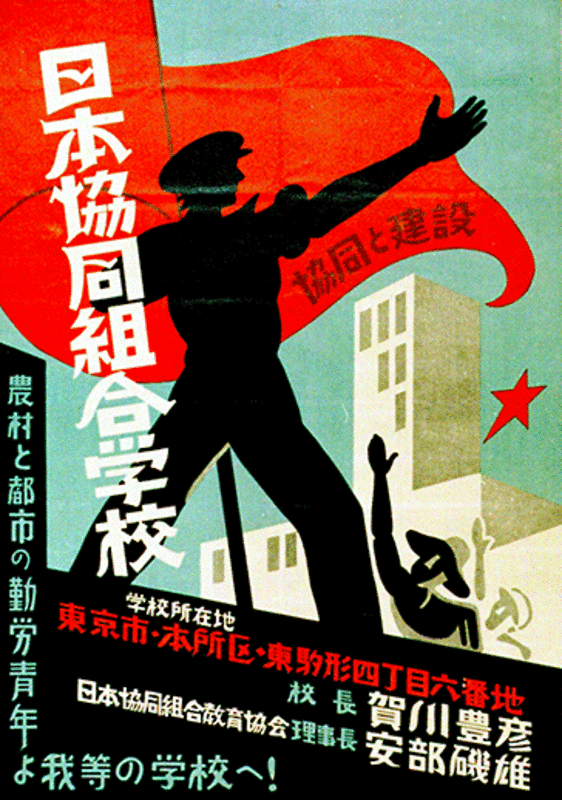Globalization’s New Underclass: China, the US, Japan and the Changing Face of Inequality
By Stephen Roach
[Stephen Roach, chief economist of Morgan Stanley, has written extensively on the “global labor arbitrage” and its increasing impact on politics and economics across the developed and developing worlds. The arbitrage is the result of two increasingly salient facts. First, a rapidly growing supply of skilled service-sector and technological workers is available, at low cost, in the emerging economies, most notably in China and India. And second, the internet and other information technologies are constantly reducing the transaction costs of employing these workers for firms headquartered in Europe and North America. The consequent spread of outsourcing in the service and technological innovation sectors of the developed economies is a hitherto unforeseen and destabilizing new feature of globalization.
In the present article, Roach turns his analysis to conditions within rather than across the big national players in globalization. He looks at how the arbitrage is affecting income distributions within the major countries of Asia, Europe and North America. But he focuses in particular on China and the US, where Gini data on income distributions indicate that inequality has been growing most dramatically. The US has of course been home to rising inequality for over the past three decades. But Roach emphasizes the fact that recent years have seen accelerated inequality with gains concentrated among a small elite at a time when worker productivity was simultaneously rising rapidly. Since the US certainly has a competitive labour market, economic theory would predict that gains from productivity increases would be more equitably distributed. The fact that the gains are not being spread out by market forces is an indication of the arbitrage at work. While the US press has focused on the loss of manufacturing jobs, as in the massive layoffs announced by GM, Ford and Delphi in the auto industry, Roach’s research reveals that this gap between increasing productivity and stagnating compensation is even greater in services than in manufacturing. This is indicative of the spread of the arbitrage and the deepening of its effects.
But it is not only the rich countries, including Japan and the US, that are experiencing growing inequality of income and wealth. In China, the Gini scores have risen from 35 in 1990 to 45 in 2003. Indeed, some analysts have seen in this a change from one of the world’s most egalitarian income distribution patterns to among the most skewed distributions. This occurred in spite of a massive movement of labour from the countryside, where incomes are low, to the cities, where incomes are about three times those in rural areas. It appears that income gaps in the cities are enormous and increasing, a consequence in part of the layoffs of large numbers of state sector workers who face unemployment and, at best, sharply reduced incomes at unstable new jobs. Likewise, the sale of urban and periurban land has resulted in the transfer of vast sums of money into the pockets of officials and speculators at the expense of the villagers who, in theory, owned the land. Roach cites one study by China’s Academy of Social Sciences that suggests that average incomes of the lowest fifth of Chinese urban workers are only about 5 percent of the top fifth. Indeed, it is only since the 1980s that urban poverty emerged as a problem in China with rising urban unemployment and the dismantling of much of the welfare structure. Nevertheless, it is the continuing large spatial inequalities, notably those between city and countryside, and between prosperous coastal areas and poorer inland regions, that shape the distinctive face of Chinese inequality.
American pressure on China to reign in exports and revalue its currency is typically explained as a function of the vast trade imbalance, with the US in the red by $11.2 billion in March 2006, more than double the figure for one year earlier. These policies, which Roach regards as scapegoating, are equally a product of pressures resulting from the continued imbalance between US and Chinese wages. Within China, on the other hand, the export-centred growth model is being rethought in order to put more emphasis on domestic consumption and services combined with a reduction in urban-rural inequality. It is hoped these moves will ameliorate both income disparities and overseas pressure. But in the best of circumstances, it will take considerable time to achieve results, while pressures for change build within both China and the US.
A larger question, not addressed in the article, is the extent and implications of the arbitrage elsewhere. It is difficult to determine trends in Japan, for example, which Roach’s Gini data (25) suggest does not yet confront as severe a problem of inequality as America and China. But Gini data are subject to various assumptions in their construction and may not capture the full dimensions of inequality for a number of reasons. In particular, Roach’s citing of Japanese Gini data ignores other data showing rising inequality in Japan.
Equally important, the political problems posed by increasing inequality depend on how organized the “losers” are, the real or perceived degree of opportunity, and other matters particular to a given country at a given time. Thus Japan already features a growing debate on inequality, and particularly the extent to which the Koizumi regime’s reforms are responsible for the widening gaps among younger workers, the erosion of savings among many households, and so on. There is, however, virtually no attention in Japanese discussion to the service-sector arbitrage that Roach highlights, and only limited discussion of the reform of education that many countries (especially in Scandinavia) have undertaken in efforts to try to prevent the flight of service and technology jobs.
If anything, Japanese firms appear to be outsourcing service work in China as readily as their American and European counterparts, as Andrew Ross suggests in his new book Fast Boat to China: Corporate Flight and the Consequences of Free Trade. The Koizumi regime’s policy is to encourage more deregulation in order to deal with inequality, as Minister of Internal Affairs Takenaka Heizo stresses in the May 2006 issue of the monthly Bungei Shunju. But this one-sided approach will almost certainly exacerbate the problem, given Japan’s lack of serious attention and finances devoted to upskilling and its generally lagged performance in fostering the knowledge economy. This suggests increasing likelihood that the Japanese public debate will in due time take up the issue of the arbitrage and its link to growing social inequality.
Roach may well be too optimistic in his assessment of Chinese efforts to curb problems of inequality, particularly urban-rural inequality, as important measures such as the household registration system continue to favor urban dwellers by denying rural people access to benefits reserved for city dwellers. But China appears to be far more cognizant of the destabilizing potential of inequality than either the US or Japan. AD & MS]
Globalization’s New Underclass
By Stephen Roach
Billed as the great equalizer between the rich and the poor, globalization has been anything but. An increasingly integrated global economy is facing the strains of widening income disparities — within countries and across countries. This has given rise to a new and rapidly expanding underclass that is redefining the political landscape. The growing risks of protectionism are an outgrowth of this ominous trend.
It wasn’t supposed to be this way. Globalization has long been portrayed as the rising tide that lifts all boats. The surprise is in the tide — a rapid surge of IT-enabled connectivity that has pushed the global labor arbitrage quickly up the value chain. Only the elite at the upper end of the occupational hierarchy have been spared the pressures of an increasingly brutal wage compression. The rich are, indeed, getting richer but the rest of the workforce is not. This spells mounting disparities in the income distribution — for developed and developing countries, alike.
The United States and China exemplify the full range of pressures bearing down on the income distribution. With per capita income of $38,000 and $1,700, respectively, the US and China are at opposite ends of the global income spectrum. Yet both countries have extreme disparities in the internal mix of their respective income distributions. This can be seen in their so-called Gini coefficients — a statistical measure of the dispersion of income shares within a country. A Gini Index reading of 0 represents perfect equality, with each segment of the income distribution accounting for a proportionate share of total income. Conversely, a reading of 100 represents perfect inequality, with the bulk of a nation’s overall personal income being concentrated at the upper end of the distribution spectrum. In other words, the higher the Gini Index, the more unequal the income distribution. The latest Gini Index readings for the US (41) and China (45) are among the highest of all the major economies in the world — pointing to a much greater incidence of inequality than in economies with more homogeneous distributions of income, such as Japan (25), Europe (32), and even India (33).
While the US and China suffer from similar degrees of income inequality, they have arrived at this point through very different means. In the case of the US, there is nothing new about elevated readings of income inequality. America’s Gini coefficient has been on the rise for over 35 years — moving up from about 35 in 1970 to over 40 today. What is new is how America’s income distribution has become more unequal in a period of rapidly rising productivity growth — a development that has been accompanied by an extraordinary bout of real wage stagnation over the past four years. Economics teaches us that in truly competitive labor markets such as America’s, workers are paid in accordance with their marginal productivity contribution. Yet that has not been the case for quite some time in the US. Over the past 16 quarters, productivity in the nonfarm US business sector has recorded a cumulative increase of 13.3% (or 3.3% per annum) — more than double the 5.9% rise in real compensation per hour (stagnant wages plus rising fringe benefits) over the same period.
I donÕt think it’s a coincidence that the relationship between productivity growth and worker compensation has broken down as the forces of globalization have intensified. First in manufacturing, now in services, the global labor arbitrage has been unrelenting in pushing US pay rates down to international norms. But the real wage compression in the US has not been uniform across the income spectrum. In large part, that has occurred because increasingly broad segments of the American labor market are now exposed to a uniquely powerful competitive force — the IT-enabled arbitrage.
Courtesy of the hyper-speed of sharply accelerating Internet penetration, the global labor arbitrage has pushed into areas that historically have been unaccustomed to wage competition. In earlier research I found that the disconnect between compensation and productivity growth during the current economic expansion has been much greater in services than in manufacturing. This once nontradable segment of the US economy is now feeling the increasingly powerful forces of the global labor arbitrage for the first time ever (see my 8 July 2005 dispatch, “Back to the Drawing Board”).
The Internet has forever changed the competitive climate for most white-collar knowledge workers. Courtesy of near-ubiquitous connectivity, the output of the knowledge worker can now be e-mailed to a desktop from anywhere in the world. That brings low-cost, well-trained, highly-educated workers in Bangalore, Shanghai, and Eastern and Central Europe into the global knowledge-worker pool. That’s now true of software programmers, engineers, designers, as well as a broad array of professionals toiling in legal, accounting, medical, actuarial, consulting, and financial-analyst positions. Within this global pool of like-quality workers, a powerful arbitrage acts to narrow wage disparities. As a result, real wage compression in open economies like the United States has moved rapidly up the value chain — sparing an increasingly small portion of those at the very top of the occupational hierarchy. In short, the IT-enabled global labor arbitrage is a guaranteed recipe for mounting income inequality. Washington’s penchant for cutting taxes of the wealthy probably hasn’t helped matters either.
In China, it’s a different story altogether. China remains very much a tale of two economies — a booming development model at work in the increasingly urbanized coastal part of the nation in stark juxtaposition with relatively stagnant economic conditions persisting in the rural central and western portions of the country. While fully 560 million urban Chinese are now participating in the economy’s rapid development dynamic, that still leaves a rural population of some 745 million on the outside looking in.
Interestingly enough, the accelerating trend of rural-to-urban migration has done little to arrest the inequalities of the Chinese income distribution over the past 15 years. This is somewhat surprising in that urban per capita incomes in China (US$1,531 in the top 35 cities in 2004) are slightly more than three times those in rural areas ($488). But the increase in China’s overall Gini Index from 35 in 1990 to 45 in 2003 not only reflects the impacts of an ever-widening income disparity between coastal China and the rest of the nation, but it is also a function of the increased divergence in the distribution of urban incomes. On this latter point, a recent report of China’s Academy of Social Sciences notes that average incomes in the bottom quintile of urban Chinese workers are less than 5% of average incomes in the upper quintile.
Significantly, Chinese income disparities in the Internet age may well have a very different connotation than in the past. With increased IT connectivity in western and central China — mainly in the form of the village kiosk — the rural poor now have real-time access to the “outside world.” This gives them a very vivid picture of the prosperity they are missing. In that vein, the Internet has the potential to spark resentment and social instability in China’s two-track development model — the very last thing the government wants. The Chinese leadership is very focused on the income distribution issue, and is expected to make this a major topic of debate and policy action at the upcoming National People’s Congress.
That campaign has already begun. On 21 February, a “new socialist countryside” program was unveiled jointly by the State Council (China’s cabinet) and the Communist Party — focused on providing increased support for farmers together with improved education and healthcare for the rural population. The plan also gives special attention to the role of finance in stimulating rural development, especially through increased bank lending to farmers, along with increased private incentives for investments in rural credit cooperatives. This multi-year initiative is aimed squarely at the income distribution issues noted above.
As different as the problems are in the US and China, there is no economic issue in either country that hits the political hot button like income disparities. And with both countries suffering from relatively high degrees of inequality, neither can be expected to backtrack insofar as the political response is concerned. Given the mounting bilateral trade tensions between the two nations, this poses a worrisome problem: America’s increasingly populist politicians have responded to the income distribution problem by turning protectionist — portraying China as the culprit for the pressures bearing down on middle-income US workers. Even if this view is dead wrong, as I continue to believe is the case, for China, there seems to be no immediate escape from the growing political wrath of Washington (see my 24 February dispatch, “Saving Tensions and the Protectionist Backlash”).
China, on the other hand, continues to cling to an export- and investment-led growth dynamic that not only fuels political resentment in the US but also seems to have a natural bias toward widening disparities in its income distribution. Yet this same approach drives the vigorous employment growth that is absolutely vital in order to provide China with the scope to keep dismantling its inefficient state-owned economy. The Chinese leadership knows full well that this is not a sustainable growth formula. Its recent focus on stimulating private consumption and services is a clear recognition that a new recipe is needed. But this will take time — and quite possibly a good deal of it. Meanwhile, China is engaged in a very delicate balancing act between reforms, which seem to be exacerbating income disparities, and externally-focused growth, which seems to be evoking a protectionist backlash. In response, the Chinese leadership is turning to the micro management techniques of market-based socialism for answers — namely, a gradual shift in its currency policy to diffuse external pressures and targeted income support measures to counter internal pressures. Only time will tell if this is the right approach.
Inequalities of the income distribution have long been the AchillesÕ heel of economic growth and development. In an era of IT-enabled globalization, that seems more the case than ever. History tells us that the pressures of widening income disparities are often vented in the political arena. The steady drumbeat of protectionism is a very worrisome manifestation of that lesson. To the extent the risks of protectionist actions come into play, the US dollar and real interest rates would probably bear the brunt of the financial market response.
Stephen Roach is Chief Economist, Morgan Stanley. He wrote this article for the Global Economic Forum, March 3, 2006.





